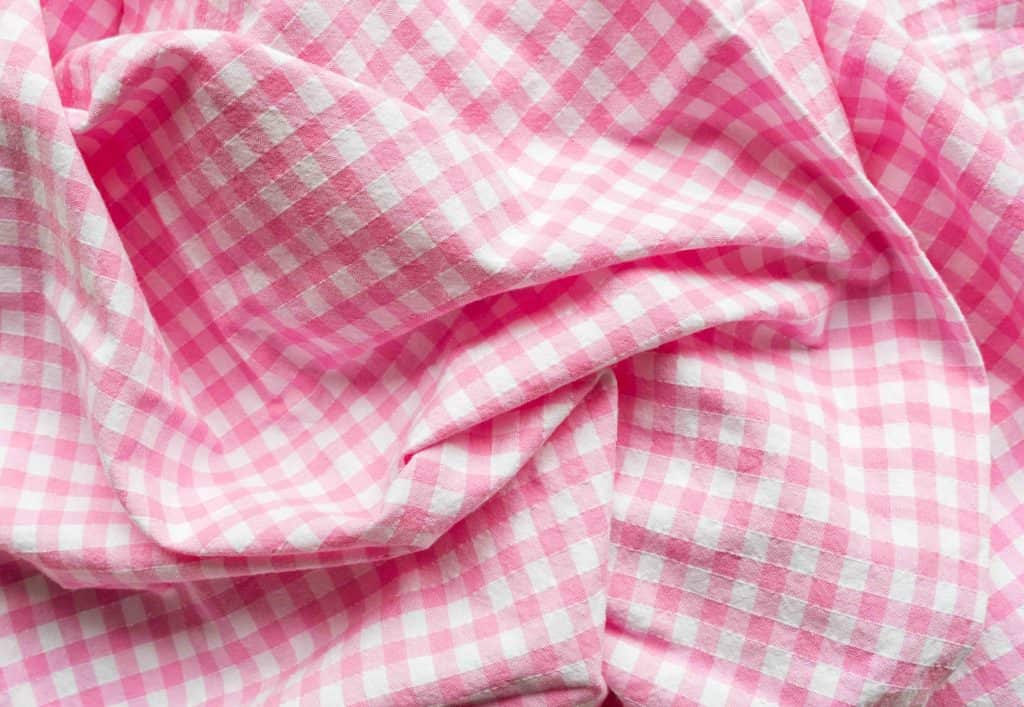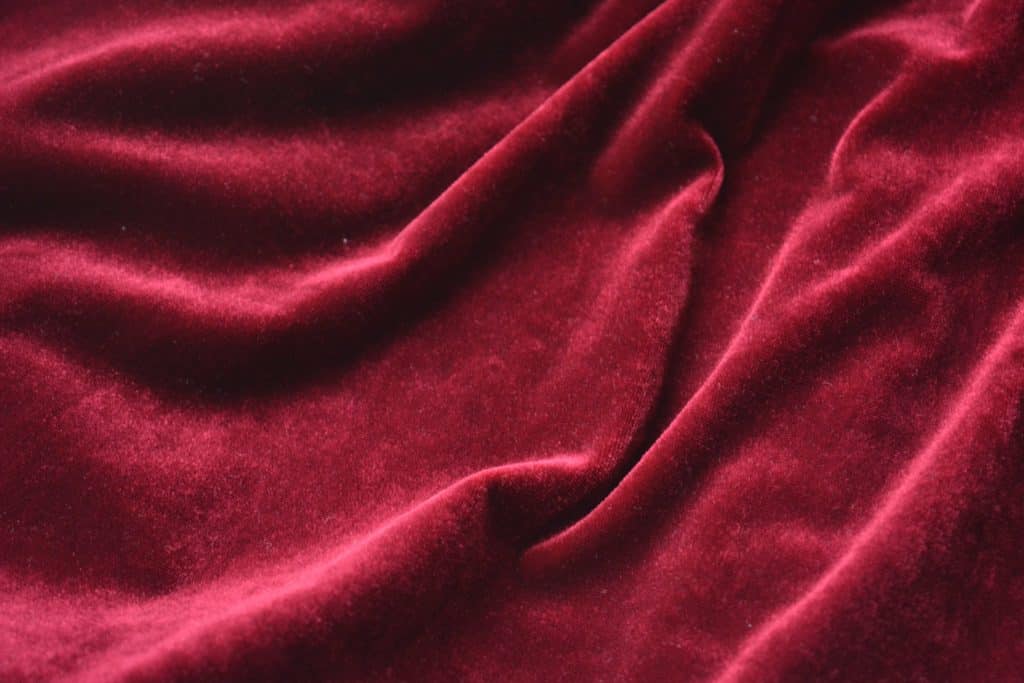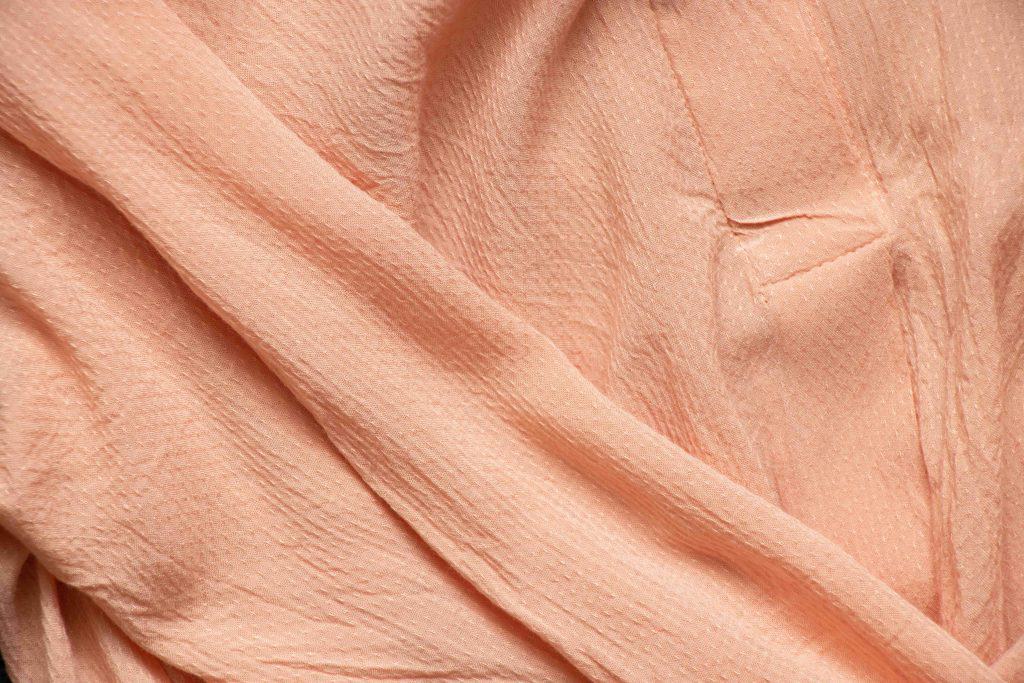
The types of fabrics you see in your everyday life all have different names and purposes. Many types of clothing rely on these different fabrics. The same goes for furniture, curtains, carpets, and other daily necessities we need in our life. Knowledge of fabrics is useful, whether you’re looking into making a dress of your own, or trying out a new hobby. The durability of a type of fabric also matters depending on its use.
But which one could be the right fabric to start your DIY project? Which one did grandma buy at that store? Which one is the best for sewing material? While we may not have an obvious idea of what you’re looking for, we have all types of fabrics listed down here for you to look into!

Definition of Fabric
Fabric is a woven or knitted material, which you can do a lot with. It means that you can use it for upholstery, clothing, buildings, and many more. Fabric materials can come from vegetables, plants, and even animal skin.
Cloth and Textiles
What is textile? Textiles are made through interlaced fibers. You can see them on your carpets or in medical equipment (textile fabrics). On the other hand, geotextiles are textiles used for construction, specifically, around the soil. Meanwhile, some textiles have a fishnet texture, making them rough.
While fabric made of felt, or from weaving or knitting, is cloth. Cloth material is usually used for wool, cotton, and small fibers, by definition. Cloths aren’t that different from fabric and textiles, though. The only difference is the manner of their creation.
We now know what the definition of fabric is. Now let’s get into the fabric types that can be found everywhere. There are many of them out in the open, so here’s a list of the types of fabric and the types of materials made from them.
Canvas

A lot of painters use canvas as a medium to create their artwork. This is because people make a canvas out of durable cotton and linen yarn. With the right procedures, canvas fabric can even become waterproof. While it is mostly associated with painters, the canvas can also be used for outdoor upholstery or picnic blankets.
Chantilly

Tulle and Chantilly go hand in hand in many formal attires. The word Chantilly is French, which means to whip or be flavored. Still, they named it Chantilly for the town it was created in, and not the word. In modern times, it is still quite an expensive fabric despite it being mass-produced globally.
Chenille

Chenille fabric is a type of cotton that has pieces of fibers protruding from it. It’s a fuzzy fabric that designers use to make sweaters and beddings. Chenille upholstery fabric is a popular fabric which artists use for covering chairs, couches, and other items with a thicker version of velvet.
It’s also one of the strongest fabrics out there. This makes using chenille fabric a wonderful choice if you want the project you’re making to have both a very solid shade, as well as good durability.
Cotton

Consumers around the world have used cotton as a fabric more than others. People have made cotton using miscellaneous lengths of fiber for centuries. Our T-shirts, bedsheets, and even some dresses are often in cotton fabric. This is because there are many types of cotton fabric. Despite its usefulness, cotton fabric has a dark past. In the 1800s, slave owners forced their slaves to work in cotton fields, and often abused them as well. Southerners had many slaves back in the day, and it is still a common debate in modern society.
Crepe

Crepe is one of those fashion fabrics that immediately catches your eye. Many fashion designers use it for expensive suits. They consider it a dress fabric that weighs less than it looks. Interior designers also use crepe for upholstery of furniture and cover pillows. People can make it out of wool, synthetic fabric, or cotton. The most noticeable feature of crepe fabric is that it wrinkles easily, which is why it’s best to steam most clothes made from it.
Deco Mesh
Deco mesh has the fishnet texture of what looks like burlap. They usually come in solid colors. Its durability makes it weather-resistant. It is often used for outdoor designs or flower arrangements. The fabric is often sealed using heat, unlike the other fabrics listed here. Deco mesh has many subtypes, such as poly burlap mesh, metallic mesh, basic mesh, and so on.
Denim
Denim is one of the most famous of the different types of fabrics you can see listed here. It is commonly used as apparel fabric, and is popular in making jeans, jackets, bags, and even dresses. The word denim actually means “from Nimes”, since having been invented in Nimes, France. It became popular in the 1930s thanks to western movies featuring cowboys wearing denim jeans.
Gingham

This is a type of fabric that was once purely made of cotton until the introduction of synthetic fibers. Gingham’s name is derived from the word genggam, which is a Malay word meaning stripe. They make it so the patterns can range from sizes and be visible from the inside out.
Manufacturers usually make gingham with two combined colors. Most of the time those colors are a mix of red, blue, and white. You can see it on tablecloths, casual button-downs, and t-shirts. Because gingham is easy to make, it’s often a favorite of mass-producing fabric stores.
Jersey

People make jersey fabric from wool. Stretchable and now made from a blend of cotton and synthetic fabric, people often use it for sweatshirts and beddings. They discovered it in Jersey of the Channel Islands during the dark ages. Coco Chanel, the creator of the high fashion brand Chanel, innovatively reworked the use of jerseys by making dresses and coats for women using it.
Lace
As we discussed earlier, Chantilly is a type of lace. This fabric is delicate and frays easily but has distinct patterns (usually floral). It was originally made from silk and linen but has now since been replaced with cotton threads and synthetic fiber. Because of the intricacy and detailed effort into making them, lace is still considered a luxury item. The machine was invented in the 1800s to mass-produce lace. John Heathcote was the first person to ever produce lace that did not fray or break once cut.
Lawn

First produced in Laon, France, people usually make lawn cloth with cotton, however, manufacturers can still use other fabrics to make it. The lawn has many other names such as batiste, nainsook, or cotton lawn.
Weavers make lawn fabrics through a simple, plain weave process. Folks used to make it only using linen, but once they were able to trade with India, cotton became an option. Thanks to their interactions, India decided to make their own lawn cloth using cotton, giving birth to the fabric you see today.
Leather
People make leather fabric using animal skins and hides. It’s also the one with the most variety since most animals can be produced into leather. Meanwhile, cows are the most popular source of leather. Other types of popular animal leather are stingrays, crocodiles, and pigs. Depending on the quality of the animal parts, leather can become extremely high grade. It’s wrinkle-free and resistant to water. To many folks in the world, leather is a form of animal abuse. This is because the mass production of leather demands a lot on many animals.
READ MORE: Types of Leather Based on Animal Hide, Finish, and More
Modal
People make Modal using beech-tree pulp. In addition, they make it as a semi-synthetic fabric usually made with rayon. Its primary uses are for clothing, and is more expensive than viscose or cotton. This is also a new type of fabric invention in Japan during the 50s.
Muslin

Once a luxury fabric, muslin is an important fabric in the fashion world because it helps aid designers in the visual look of their projects. While many believe that muslin originated from Mosul, Iraq, there are traces of it actually being first used in ancient India. In Ancient India, its name was Jandani, and was colorful and lightweight with a sheer texture.
Organza

Manufacturers make organza with synthetic fibers or silk. Organza is a lightweight fabric first produced in Turkestan. Designers and manufacturers use organza for clothing materials such as scarves, headdresses, and blouses. It’s also possible to use organza for curtains.
Physically speaking, organza looks transparent and thin. Hence, designers often pair it with a thicker form of fabric to add texture. People used to make organza only from silk. Nowadays, manufacturers can now make it with synthetic fibers. Its name comes from the word organzine, which means it’s a silk fabric made using the twisting method. For fashion enthusiasts, organza is a staple fabric for wedding gowns because of its dream-like aesthetic.
Polyester

Polyester is another synthetic fabric that makes this list. Manufacturers and sellers distribute polyester as a substitute for cotton. The ingredients to make polyester is a surprising mix of petrochemicals, which means chemists make it with coal or petroleum, making it durable. It doesn’t absorb sweat, however, making it restricting.
W.H. Carothers’ Laboratory created its first subtype called Terylene, which DuPont bought the legal rights to, and advanced the technology, creating Dacron. Introduced to America in the 1950s, it’s quite a fairly young type of fabric.
Satin

There are many subtypes of satin, but all have the common feature of having a shiny front and a rough back. The word satin is actually derived from Zaitun, an Arabic word translating to Quanzhou, the Chinese port where they made it 2000 years ago. The church and aristocracy used it exclusively due to its high price value. Marie Antoinette’s husband, King Louis XIV, used satin for his upholstery in the Palace of Versailles. Today, it’s mostly just a fashion fabric rather than a fancy fabric for nobles. In addition, there is still satin-made upholstery as well.
Silk
Experts use silk as dress material or silk drapes. Historians recognize it as one of the most expensive consumer items ever traded. Designers adore its shiny but soft textures. Ancient Chinese discovered the organic fiber used to make it from silkworms, thus creating the process called sericulture to produce a controlled amount.
The Silk Road was named after it. During the Roman Empire’s reign, they traded with China for consumer goods and cultural knowledge. This helped the Chinese receive wool fabric and precious metals like silver and gold. In return, they traded silk with the Roman Empire, therefore giving birth to the Silk Road trade route. It was once a popular commerce road that turned into a dangerous place after the fall of the Roman Empire.
Spandex

This is a type of synthetic fabric that’s famous for its elastic nature for more body movement. It has two other names: elastane and lycra. Spandex was a hit during the disco era. It is also very flexible. Costumes, athleisure, and underwear use spandex for comfort.
Suede

People make leather using animal skins and hide. Meanwhile, they make suede using only the underside of animals. However, people associate suede with lambskin only. The truth is, manufacturers can use other animals to make suede as well. These include pigs, goats, deers, or calves. Suede is often used for footwear thanks to its durability and flexibility. Molding suede isn’t as difficult as leather and can be used as bags or belts as well.
Synthetic

Synthetic fabric is made out of synthetic fibers. You cannot find synthetic fibers in nature as chemists made them. There are many types of synthetic fabrics such as nylon, rayon, polyester, and more. Audemars, a Swiss chemist who made synthetic silk out of mulberry tree bark, was the first to make synthetic fabric. This followed rayon, a synthetic fabric made by Sir Joseph Swan. Thanks to technological advancement, DuPont Chemicals made more synthetic fabrics in 1935, and introduced them to the public to make hosiers. Today, you can see the synthetic fabric in many apparels such as bathing suits.
Taffeta

You must use silk or synthetic fibers to make taffeta. It’s one of those shiny fabrics similar to silk and satin. Depending on the weaving, the sheer material, and the fiber used, taffeta’s weight can vary. Due to its decorative appearance and soft texture, taffeta is a popular lining rather than anything else on the list.
Toile

Toile de Jouy is a type of linen. France during the 1700s loved toile. They used it as wallpaper, and sometimes, they were on bedsheets, and even on housewares. In fact, they’re getting a rebirth thanks to the cottage core aesthetic. You’ve likely seen the toile fabric in your grandmother’s house as well.
Tulle

This is a lightweight fabric often used in dresses, such as ballerina tutus, wedding dresses, and other special occasions. Tulle is a soft fabric and can be easily torn, making it fragile.
Another way to use tulle is for embroidery. It also adds texture or designs to a dress or even for flower arrangements. Depending on the color, tulle can become either transparent or vivid.
Tweed

When fashion enthusiasts think of tweed, they immediately correlate it to the luxury fashion brand, Chanel, because of their staple tweed jacket. Made from wool and was originally a Scottish product, Lady Dunmore, Queen Victoria’s lady-in-waiting, was the one to introduce the fabric to the British aristocracy. Tweed has many names, its common names, in particular, are fleece, cashmere, fur, and wool.
Sheep is the go-to animal for wool. However, the truth is that wool can come from different animals other than sheep. It’s not as breathable as cotton, but provides good warmth in the cold weather.
Twill

Twill fabric is easily distinguishable because of its diagonal pattern. In some cases, the patterns can change to patterns like herringbone. In fact, denim is a type of twill. Manufacturers make some neckties out of twill. It is also prevalent in furniture and homewares. It’s one of the major types of fabrics, which includes satin and silk. It has two sides: the technical face and the technical back. This is because the technical face is more durable, and is the one that is usually shown outwardly.
Velvet

Velvet’s luxuriously smooth texture makes it one of the most well-known fabrics out there. It comes from the word velvety, which means soft. Designers use velvet to give off a high-end feel to their works. Such dresses became a hit during the 1970s and saw the limelight once more in the late 2010s. Velvet upholstery fabric is one of those fabrics you see on a seductive couch, or a historical movie, as velvet seems to be exclusive for nobility.
Viscose

This is the type of fabric you probably have in your closet that you have no idea about. People create viscose using wood pulp. Viscose works as a substitute for silk, which is more expensive. Charles Federick Cross discovered it in the 1800s. Mass producers sometimes use viscose as a substitute for silk fabric as it is of a lower cost value.
Was this page helpful?
Our commitment to delivering trustworthy and engaging content is at the heart of what we do. Each fact on our site is contributed by real users like you, bringing a wealth of diverse insights and information. To ensure the highest standards of accuracy and reliability, our dedicated editors meticulously review each submission. This process guarantees that the facts we share are not only fascinating but also credible. Trust in our commitment to quality and authenticity as you explore and learn with us.
